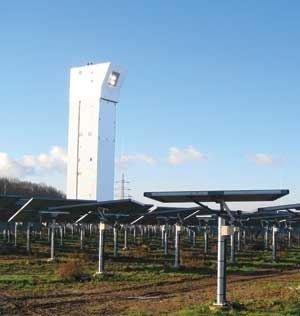Four new solar projects on horizon
 Solar energy has widely become the front runner in the race to finding realistic solutions to our sustainable future. With new projects already underway and proposals hitting the drawing board on a daily basis, solar energy is here to stay. Researchers and developers have come up with some exciting new ideas for the future of solar energy. Here’s a small taste of what these solar energy installations have to offer.
Solar energy has widely become the front runner in the race to finding realistic solutions to our sustainable future. With new projects already underway and proposals hitting the drawing board on a daily basis, solar energy is here to stay. Researchers and developers have come up with some exciting new ideas for the future of solar energy. Here’s a small taste of what these solar energy installations have to offer.
1. Rice Solar Energy is planning a solar energy installation in an uninhabited part of eastern Riverside County, California. The system will rely on 4.4 million gallons of melted salt placed in a 538-foot tower. Mirrors around the tower reflect sunlight onto it, heating the salt to such great temperatures that it retains a useful amount of heat seven hours after sundown.
2. The Mojave Solar Park is a solar thermal power facility currently contracted to be constructed in the Mojave Desert in California. The facility is being constructed by Solel Inc. and is designed to have a capacity of 553MW. Upon completion it will become the world’s largest solar collection facility both in capacity and land size.
3. Dr. Anthony Patt, a research scholar at the International Institute for Applied Systems Analysis in Austria, estimates that if a fraction of the Sahara, probably the size of a small country, be covered with solar panels, the energy generated would be sufficient to power all of Europe. Dry climate and the high-intensity of the sun’s rays will benefit the $70 billion installation, making it a highly-efficient venture.
4. The Desertec Foundation 100GW project will be built by 20 blue chip German companies, and will be able to generate a whopping 100GW of concentrating solar power. Unlike other solar power plants, which are usually built on a single location, this massive plant would be scattered throughout politically stable countries in northern Africa. The collective output of the plant would be 80 times larger than a similar plant being planned for the Mojave Desert. The power output would be transported across the Mediterranean Sea to Europe on high-voltage DC lines that will finally supply 15 percent of the energy demand.



